Tony Bennett’s five fellow NBA alumni coaching in the 2021 NCAA tournament can only hope Bennett has started a trend.
When his Virginia Cavaliers became college basketball’s most recent national champions in April 2019, the ex-Charlotte Hornet Bennett became just the fifth person to both play minutes in a meaningful NBA game and also coach a Division I men’s basketball champion, joining Kevin Ollie (UConn), Billy Donovan (Florida), John Thompson (Georgetown) and Al McGuire (Marquette). (If you’d like to expand the definition, Kansas’ title-winning coach Larry Brown played for three franchises in the ABA during his playing career, including the Denver Nuggets).
Should either Juwan Howard’s top-seeded Michigan Wolverines or Patrick Ewing’s upstart Georgetown Hoyas make a run to their first titles since the 1980s over the next three weeks, either Howard or Ewing would become a fairly clear No. 1 on the “best players among title-winning college coaches” list.
Until then, they’ll have to settle for prime position on our list of playing careers for the 68 coaches who will work sidelines in the 2021 NCAA tournament. As always, this list was devised in largely unscientific fashion by the writer, who knows of no qualitative or quantitative method to compare a Division III star to a D-II reserve to a D-I walk-on.
First, the breakdown of highest level of basketball achieved:
NBA (regular-season roster): 6
Other professional basketball experience: 10
Division I college basketball: 23
Lower NCAA levels, NAIA, or junior college: 19
High School (varsity roster): 8
No varsity high school experience: 2
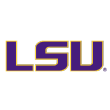
68. Will Wade, LSU Tigers — Wade is the lone coach in this tournament who never played high school basketball — he played golf and was a four-year student manager at Franklin Road Academy in Nashville. Wade’s entry into collegiate coaching would come at his alma mater of Clemson, where he was a student manager under Oliver Purnell before being hired as a graduate assistant for the Tigers.

67. Scott Drew, Baylor Bears — Drew’s playing days ended with the JV team at Valparaiso (Indiana) High School. Though his brother, Bryce (also coaching in this tournament), played in the NBA, Scott Drew was a tennis player (he played on the team but didn’t letter) and basketball manager at Butler.
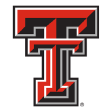
66. Chris Beard, Texas Tech Red Raiders — Beard was a regular for McCullough High School in The Woodlands, Texas, but did not play college basketball at Texas. Then-Longhorns coach Tom Penders gave Beard a managerial job, and he’d eventually become a student assistant at the school.
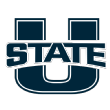
65. Craig Smith, Utah State Aggies — Smith played at the high school level for Stephen-Argyle Central High School in Stephen, Minnesota, but did not play collegiately at the University of North Dakota. It was while still a student at UND that Smith met Tim Miles, then the coach at NAIA Mayville State (North Dakota), who helped launch Smith’s coaching career by hiring him as an unpaid volunteer assistant.
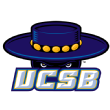
64. Joe Pasternack, UC Santa Barbara Gauchos — Pasternack played varsity basketball for four years at Metairie Park Country Day School in New Orleans, but did not play college basketball. Pasternack was a student manager at Indiana in the latter stages of the Bob Knight era, graduating from IU in 1999.

63. Dustin Kerns, Appalachian State Mountaineers — Kerns played power forward for the revered varsity basketball program at Dobyns-Bennett High School in Kingsport, Tennessee (other alumni include current Tennessee Volunteers starter John Fulkerson), but his playing career did not continue during his collegiate days at Clemson. Kerns instead became a student assistant under then-Tigers coach Larry Shyatt, launching his career in coaching.

62. Brian Dutcher, San Diego State Aztecs — Dutcher played his final level of competitive basketball for the varsity team at Jefferson High School in Bloomington, Minn., later attending the University of Minnesota but not playing under his father, Jim Dutcher — the Golden Gophers’ head coach from 1975 to 1986. The younger Dutcher worked for his dad in a non-playing role during college, before beginning his coaching career at Apple Valley (Minn.) High School and later the University of Illinois.
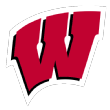
61. Greg Gard, Wisconsin Badgers — Gard was a three-sport athlete (including hoops) at Iowa-Grant High in rural Livingston, Wisconsin, but did not play basketball at Wisconsin-Platteville. He did play baseball at UW-Platteville in the 1990s but was cut before his sophomore year.
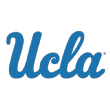
60. Mick Cronin, UCLA Bruins — Despite his diminutive stature (5-foot-7), Cronin was a good high school point guard under his father, Hep, at Cincinnati’s La Salle High. A knee injury was a factor in Cronin’s career ending before he reached college at Cincinnati.

59. Mark Few, Gonzaga Bulldogs — Few led Creswell (Oregon) High to the state’s AAA semifinals as a senior point guard. Shoulder problems prevented him from playing at Linfield College, where he intended to play basketball and baseball.
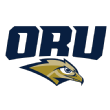
58. Paul Mills, Oral Roberts Golden Eagles — Mills was a good high school player at MacArthur Senior High School in Houston, earning a scholarship to the powerhouse NAIA program at Southern Nazarene University in Bethany, Oklahoma. Mills would not letter for the Bronchos due to a back injury suffered during his freshman year, transferring to Texas A&M, where he did not play basketball.
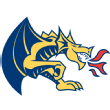
57. Zach Spiker, Drexel Dragons — After playing high school basketball at Morgantown (W.V.) High School and at the prep level with The Hill School (Penn.), Spiker served as a backup point guard under head coach Jim Mullins at Division III Ithaca College for two seasons, eventually transitioning into a role as a student assistant coach with the Bombers. Spiker’s teammates at Ithaca included current William & Mary coach Dane Fischer (Spiker now faces him in the CAA), UMass AD Ryan Bamford and ESPN college basketball studio host Kevin Connors.
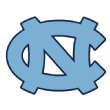
56. Roy Williams, North Carolina Tar Heels — Williams won all-county, all-conference and all-region honors at T.C. Roberson High School in Asheville, North Carolina, and was a non-scholarship member of North Carolina’s freshman team under Bill Guthridge in 1968-69.

55. John Gallagher, Hartford Hawks — Gallagher began his collegiate career at Division III Catholic University before transferring to become a walk-on under Phil Martelli at Saint Joseph’s from 1996-99. The Delaware County (Pa.) native played in 30 games over three seasons, including one in the 1997 NCAA tournament, scoring 17 career points and dishing out seven assists for St. Joe’s. Gallagher departed Hawk Hill with a year of eligibility still remaining for the opportunity to become a full-time assistant under Speedy Morris at Big 5 rival La Salle.

54. Grant McCasland, North Texas Mean Green — McCasland was an undersized walk-on guard for four years at Baylor (1995-99) during the Harry Miller era, scoring 32 career points and dishing out 34 assists.
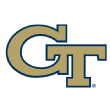
53. Josh Pastner, Georgia Tech Yellow Jackets — Pastner played four seasons as a walk-on for Lute Olson at Arizona (1996-2000), appearing in 42 games and scoring 40 career points. As a freshman, Pastner was a member of the Miles Simon/Mike Bibby-led Wildcats team that upset Kentucky to win the 1997 national championship in Indianapolis. Pastner appeared in three NCAA tournament games during his career at U of A.
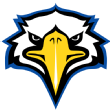
52. Preston Spradlin, Morehead State Eagles — Spradlin played four seasons (2005-09) at shooting guard for NAIA Alice Lloyd College in Pippa Passes, Kentucky. Spradlin appeared in 97 games over four seasons, scoring 352 points while shooting 40.7% from the field and 37.2% from the 3-point line.

51. Mike Young, Virginia Tech Hokies — Young was a four-year letterman and point guard for Division III Emory & Henry from 1982 to 1986, serving as the Wasps’ team captain his junior and senior seasons.

50. Rick Barnes, Tennessee Volunteers — Barnes served mainly as a reserve guard under head coach Bob Hodges at D-II Lenoir-Rhyne College in Hickory, North Carolina, from 1974 to 1977, never averaging more than three points per game. “He was good, but it didn’t translate to games,” Barnes’ teammate John Lentz told the Dallas Morning News in 1998.

49. Dana Altman, Oregon Ducks — Altman was a guard and captain at Fairbury Junior College in Nebraska (now known as Southeast Community College) from 1976 to 1978 before transferring to Division II Eastern New Mexico University. Altman has described himself as a “poor player” for the Greyhounds, but he did graduate magna cum laude from the school in 1980.
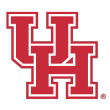
48. Kelvin Sampson, Houston Cougars — Sampson was a point guard and later a team captain at NAIA Pembroke State (now UNC Pembroke) from 1973 to 1978, and was eventually named to the school’s athletics Hall of Fame, alongside his father, Ned. Sampson also earned three collegiate letters as a baseball player at Pembroke.
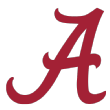
47. Nate Oats, Alabama Crimson Tide — Oats played at Division III Maranatha Baptist University in Watertown, Wisconsin, from 1993 to 1997, serving as a captain and earning all-conference honors.

46. Brad Brownell, Clemson Tigers — If you’ve made it this far you’ll be interested to learn that Brownell had the ball in his hands with a chance to win the 1990 Division III national championship for DePauw University in Greencastle, Indiana. Was Brownell fouled on the final play? You decide.
Despite that heartbreak, let the record reflect that Brownell was a three-year starter for the Tigers from 1988-91, finishing his career among the school’s all-time leaders in assists (332) and free throw percentage (.782).

45. Dan Engelstad, Mount St. Mary’s Mountaineers — Engelstad was a four-time letterwinner at Division III St. Mary’s College of Maryland (a different school than Mount St. Mary’s), playing point guard under coach Chris Harney and graduating as the school’s all-time assist leader (419).
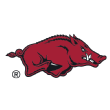
44. Eric Musselman, Arkansas Razorbacks — Musselman was an undersized reserve guard at the University of San Diego (1983-87), earning limited playing time but appearing in a pair of NCAA tournaments as a player. After graduating, Musselman was a fifth-round draft choice of the CBA Albany Patroons, who were at the time coached by his father, Bill.

43. Tom Izzo, Michigan State Spartans — Izzo played point guard at Division II Northern Michigan from 1974 to 1977, captaining the team and also winning all-conference and team MVP accolades as a senior.

42. Shaka Smart, Texas Longhorns — Smart was a four-year starter and three-year captain at Division III Kenyon College in Gambier, Ohio. He made the All-North Coast Athletic Conference team during his senior season and remains the school’s career assist leader (542) by a wide margin.

41. Robert Jones, Norfolk State Spartans — Jones was a quality player at the Division III level for SUNY New Paltz (1997-2001), winning three All-SUNYAC citations and earning honorable mention D-III All-American honors for the Hawks in 2000. Jones is New Paltz’s all-time leader in blocks (140) and remains top 10 in school annals in points (1,321) and rebounds (875).
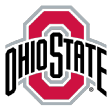
40. Chris Holtmann, Ohio State Buckeyes — Holtmann was an NAIA All-American guard at Taylor University in Upland, Indiana, with his best year coming in 1993-94, when he led the Trojans to a 25-9 record, a No. 1 national ranking and a berth in the NAIA tournament.

39. Pat Kelsey, Winthrop Eagles — Kelsey played at Wyoming (1993-94) and then Xavier (1995-98), serving as a reserve guard on two NCAA tournament teams under Skip Prosser. Kelsey, who later launched his collegiate coaching career when he was hired to Prosser’s staff at Wake Forest, scored 122 points and dished out 131 assists during his college playing career.
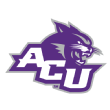
38. Joe Golding, Abilene Christian Wildcats — Golding was a four-year point guard at Abilene Christian (1994-98), averaging 4.3 points and 4.2 assists per game over his career for a program that was then at the Division II level.
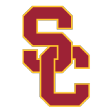
37. Andy Enfield, USC Trojans — Enfield was a Division III All-American at Johns Hopkins in Baltimore, where he still holds the school’s career scoring record (2,025 points) and also played in a pair of NCAA tournaments. Enfield was particularly legendary at the line — he graduated holding the NCAA’s all-divisions career free throw percentage record (92.5, hitting 431 of 466 shots).
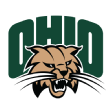
36. Jeff Boals, Ohio Bobcats — Boals was a four-year player and two-time captain at Ohio under coach Larry Hunter (1991-95), averaging 5.6 points and 4.3 rebounds during his career as a 6-foot-7 forward. Boals was a part-time starter on the 1993-94, Gary Trent-powered Bobcats team that went 25-8 and reached the NCAA tournament, losing to Indiana in the first round.

35. Porter Moser, Loyola Chicago Ramblers — Moser played guard for four seasons at Creighton (1986-1990), starting on the team that reached the 1989 NCAA tournament under coach Tony Barone. Moser, who averaged 4.6 points and 1.7 assists per game as a collegian, finished his playing career with a loss to DePaul in the 1990 NIT.

34. Mike Rhoades, VCU Rams — Rhoades didn’t just play Division III basketball, he was the best player in Division III, winning national player of the year honors in 1995 and two All America citations at Lebanon Valley (Pennsylvania) College. The shooting guard — who also led the team to a national title in 1994 — holds school records for points, assists, steals and free throw percentage, and his jersey was retired by the school.

33. Ritchie McKay, Liberty Flames — McKay was a good player at the Division II level, graduating as Seattle Pacific’s single-season and career record holder for steals. McKay also left the school ranked No. 3 on its all-time assists list.
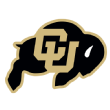
32. Tad Boyle, Colorado Buffaloes — Boyle was primarily a reserve guard for four years at Kansas under Ted Owens then Larry Brown, playing on NCAA tournament teams in 1984 and 1985 and serving as a captain during his senior year. Two of Boyle’s teammates on the 1985 KU team — Mark Turgeon (currently at Maryland) and Danny Manning (formerly at Wake Forest) — would join him in the Division I head coaching ranks.

31. Brad Underwood, Illinois Fighting Illini — Underwood started his collegiate career at then-Division I Hardin-Simmons (1982-83) in Abilene, Texas, before moving on to Independence (Kansas) Community College (1983-84) and then to Kansas State for two seasons (1984-86). Underwood was an occasional starter at guard under head coach Jack Hartman, scoring 105 points in two seasons in the Big Eight.

30. Rick Pitino, Iona Gaels — Pitino played three years as a point guard at UMass (1972-74), handing out 329 assists during his career there on teams that included future NBA player (and eventual Rhode Island, Boston College and Kennesaw State coach) Al Skinner.

29. Jay Wright, Villanova Wildcats — Wright played three seasons at Bucknell (1980-83), emerging as the Bison’s leading scorer as a junior but serving as a role player for the rest of his career with the Bison.

28. Mark Schmidt, St. Bonaventure Bonnies — Schmidt played four years at guard for Boston College (1981-85) under coaches Tom Davis and Gary Williams, and though not a prolific scorer (Schmidt scored 63 career points) he appeared in a total of seven NCAA tournament games over two separate Eagles NCAA tournament runs in 1982 and 1985. Among the notables Schmidt shared a court with in the tournament were the vaunted Phi Slama Jama (BC lost to Houston the 1982 Elite Eight) and the 1985 Duke team including Johnny Dawkins, Jay Bilas and others (BC defeated Duke in the Round of 32).
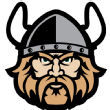
27. Dennis Gates, Cleveland State Vikings — Gates played four seasons at Cal (1998-2002) under Ben Braun, appearing in 114 games (34 starts) at guard including a pair of NCAA tournaments. Gates averaged 3.8 points per game for his collegiate career and was a two-time Pac-12 All-Academic choice.
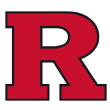
26. Steve Pikiell, Rutgers Scarlet Knights — The Bristol, Connecticut native Pikiell stayed home to play for newly hired coach Jim Calhoun at UConn in 1986, eventually playing on a pair of NCAA tournament teams and recording 165 career assists as a part-time starter at point guard. Pikiell’s final career game as Huskie was a 1991 Sweet 16 loss to the Duke team that would later upset UNLV and win Coach K’s first national title.

25. Johnny Jones, Texas Southern Tigers — Jones played point guard for four seasons at LSU under Dale Brown (1980-84), averaging 4.4 points and 2.2 assists per game over a 121-game career and playing in a pair of NCAA tournaments as a Tiger. Jones is one of six coaches in this tournament with Final Four playing experience — he played nine minutes in LSU’s loss to eventual champion Indiana in the 1981 Final Four in Philadelphia.
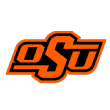
24. Mike Boynton, Oklahoma State Cowboys — Boynton played four seasons at South Carolina (2000-04) under Eddie Fogler and Dave Odom, averaging 4.3 points per game and connecting on 129 3-pointers for his career. Boynton was a full-time starter at USC during his senior season of 2003-04, helping lead the Gamecocks to the NCAA tournament.

23. Fran McCaffery, Iowa Hawkeyes — McCaffery started his career in the ACC, averaging 5.3 points as a freshman at Wake Forest (1977-78) before transferring to Penn for his final three collegiate seasons. As a senior (1981-82), McCaffery dished out 105 assists for a Quakers team that reached the NCAA tournament.
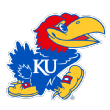
22. Bill Self, Kansas Jayhawks — Self played at Oklahoma State from 1981 to 1985, starting at point guard over his final two seasons in Stillwater. Self also played in the 1983 NCAA tournament as a sophomore at OSU, scoring eight points in a 5 vs. 12 upset loss to Princeton in the first round.
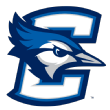
21. Greg McDermott, Creighton Bluejays — McDermott was a reliable center at Northern Iowa (1984-88), scoring 1,033 points (or about 2,000 fewer than his son, Creighton legend Doug McDermott) and being selected to the all-Mid-Continent Conference team as a junior. McDermott briefly played professional basketball in Switzerland following his graduation.

20. Leonard Hamilton, Florida State Seminoles — Hamilton was a star at UT Martin (1969-71), graduating with the school record in assists while averaging 11.7 points per game and being named to the all-conference first team as a senior. Hamilton, a UTM Hall of Famer, was the first Black student-athlete in the history of the university.

19. Darian DeVries, Drake Bulldogs — DeVries was a 1,000-point scorer and two-time captain at Northern Iowa (1994-98), developing into a double-digit scorer and the team’s assist leader over his final two seasons at UNI. DeVries led the Panthers in three-point shooting three times, including 44 percent from 3 as a senior. DeVries did not play professional basketball but has a pro in the family — his younger brother, Jared, was an NFL defensive end for 10 years with the Detroit Lions.

18. Matt Painter, Purdue Boilermakers — Painter was a four-year letterman at Purdue (1989-93), playing on three NCAA tournament teams and becoming a full-time starter as a senior. Painter was an honorable mention All-Big Ten choice in 1992-93, when he averaged 8.6 points and 4.5 assists per game.
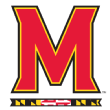
17. Mark Turgeon, Maryland Terrapins — Turgeon played point guard for four years under Larry Brown at Kansas (1983-87), was named captain in his final two years in Lawrence and became the first player in team history to play in four straight NCAA tournaments. Turgeon is one of six coaches in this tournament with Final Four playing experience, recording five assists in a 1986 national semifinal loss to Duke.
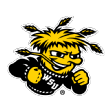
16. Isaac Brown, Wichita State Shockers — After starting his career at Mississippi Gulf Coast Community College, Brown played at Texas A&M under Kermit Davis in 1990-91, averaging 12 points per game but transferring to Louisiana Monroe (then Northeast Louisiana University) after Davis (now the head coach at Ole Miss) was embroiled in a recruiting scandal and forced to resign. Brown averaged 11.1 points per game in his lone season in Monroe, including a 14-point performance in a loss to Iowa in the 1993 NCAA tournament.

15. Dan Hurley, UConn Huskies — Though brother Bobby received more of the limelight for his exploits at Duke, the younger Hurley was a collegiate point guard of some renown as well. Hurley played in 121 games over five seasons at Seton Hall (1991-96), appearing in a pair of NCAA tournaments and later developing into a double-digit scorer over his final two seasons at the school. Hurley’s 437 assists rank among the top 10 in Seton Hall history.

14. Jim Boeheim, Syracuse Orange — Boeheim played three seasons at Syracuse (1963-66), coming off the bench his first two seasons before becoming a starter as a senior. He averaged 14.6 points and 3.1 assists during the 1965-66 campaign, leading the Orange to the Elite Eight. Boeheim went on to play professionally with the Scranton Miners of the ABL.
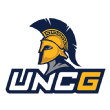
13. Wes Miller, UNC Greensboro Spartans — Miller started his collegiate playing career at James Madison in 2002 but transferred to North Carolina after his freshman season, and would depart Chapel Hill having played in 93 games — mostly as a key reserve — for Roy Williams (2004-07). The native Charlottean was known for his 3-point exploits — 96 of his 104 career field goals at UNC were from beyond the arc. He is one of six coaches in this tournament with Final Four playing experience — he appeared in UNC’s Final Four win over Michigan State in 2005, and would help the Heels cut down the nets in St. Louis two nights later. After finishing college, Miller played one pro season with the London Capitals of the British Basketball League.

12. Shantay Legans, Eastern Washington Eagles — Legans started four years at the Division I level for Cal (1999-2002) and Fresno State (2003-04), putting up career totals of 1,294 points, 548 assists and 172 steals as a collegiate point guard. Legans played in a pair of NCAA tournaments with the Golden Bears, where he was a teammate of Dennis Gates (see above), but his finest statistical season came as a senior with the Bulldogs. Legans averaged 15 points and 5.6 assists during the 2003-04 season with FSU. Legans played professionally in the Netherlands before beginning his career in coaching.

11. Matt Langel, Colgate Raiders — Langel was a very good player on some quality teams at Penn (1996-2000), starting on a pair of NCAA tournament squads under Fran Dunphy and earning All-Ivy first-team honors as a senior. Langel went to rookie camp with the NBA Seattle SuperSonics and was on the Philadelphia 76ers’ pre-Summer League squad, also playing for a range of teams in Europe before beginning his coaching career.
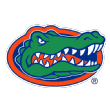
10. Mike White, Florida Gators — White was a four-year starter at point guard for Ole Miss (1995-99), leading the Rebels to three NCAA tournament appearances and graduating in the top 10 on the school’s all-time assists list. After his collegiate career concluded, White played professionally in the short-lived International Basketball League, as well as in England.

9. Bob Huggins, West Virginia Mountaineers — Huggins began his collegiate career at Ohio University in 1972, later transferring and playing three seasons at West Virginia under Joedy Gardner (1974-77). Huggins averaged 13.2 points and 3.8 assists as a senior, subsequently attending training camp with the NBA Philadelphia 76ers before being cut. A knee injury suffered when Huggins was hit by a car while bicycling weeks before the 1977 NBA draft helped curtail his playing career.

8. Wayne Tinkle, Oregon State Beavers — Tinkle starred at Montana from 1986-89, earning All-Big Sky honors as a forward over his final three seasons in Missoula. He continues to rank in the Griz top 10 in points (1,500) and rebounds (836). Tinkle played professionally for 12 years, including time in the CBA and Europe, and went to training camp with the Seattle SuperSonics.

7. Lon Kruger, Oklahoma Sooners — Kruger was a two-time Big Eight player of the year as a point guard at Kansas State (1973 and 1974) and led the Wildcats to a pair of NCAA tournament appearances during his collegiate career. He was a ninth-round pick of the Atlanta Hawks in the NBA draft (Kruger also tried out with the Detroit Pistons) and played professionally in Israel. He also played a season of minor league baseball in the St. Louis Cardinals organization and was invited to training camp with the Dallas Cowboys as a quarterback.

6. Cuonzo Martin, Missouri Tigers — Martin played four years under Gene Keady at Purdue (1991-95), where he was a quality defensive player and good outside shooter. Martin was an All-Big Ten pick as a senior, then played briefly in the NBA with the Grizzlies and Bucks. Martin was playing professionally in Italy when he was diagnosed with non-Hodgkins lymphoma, ending his playing career.
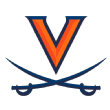
5. Tony Bennett, Virginia Cavaliers — While playing for his father Dick at Green Bay, Bennett was a two-time player of the year in the Mid-Continent Conference (now the Summit League), leading the Phoenix to three postseason berths while graduating as the conference’s leader in points and assists. Bennett played 152 NBA games as a backup guard with the Charlotte Hornets, before injuries hastened the end of his career.

4. Mark Pope, BYU Cougars — Pope began his career at Washington (1991-93), winning Pac-10 Rookie of the Year honors and averaging more than 10 points and 8 rebounds per game before transferring to Kentucky after coach Lynn Nance resigned at UW. Once in Lexington, Pope was an important reserve on two very good Wildcats teams, the second of which won the 1996 national title. Pope would go on to play in 153 NBA games as a center with the Pacers, Bucks and Nuggets, before attending three years of medical school at Columbia and ultimately opting for a career in coaching.

3. Bryce Drew, Grand Canyon Antelopes — The former Valparaiso star Drew is best remembered for his iconic buzzer-beater against Ole Miss in the 1998 NCAA tournament, also known as “The Shot.” But Drew was a lot more than that on the floor, a two-time Player of the Year in the Mid-Continent Conference who graduated as Valpo’s leading scorer and was selected No. 16 overall by the Houston Rockets in the 1998 NBA draft. Drew played in 243 NBA games as a member of the Rockets, Bulls and Hornets from 1998-2004.
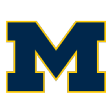
2. Juwan Howard, Michigan Wolverines — Howard was a decorated piece of Michigan’s fabled “Fab 5” teams of the 90’s, joining Chris Webber and Jalen Rose on a group that reached the national championship game in both 1992 and 1993. Following Webber’s departure, Howard would become an All-American for the 1993-94 Wolverines, averaging 20.8 points and 8.9 rebounds for a group that lost to eventual champion Arkansas in the Elite Eight. Howard was subsequently selected with the No. 5 overall pick in the 1994 NBA draft by the Washington Bullets and played in 1,208 career NBA games, which ranks in the league’s top 50 all time. Howard’s pro achievements include his selection to the 1996 All-Star Game and an NBA title won with the 2011-12 Miami Heat.

1. Patrick Ewing, Georgetown Hoyas — A two-time inductee into the Basketball Hall of Fame (both as an individual and a member of the U.S. Olympic Dream Team) who was named one of the 50 greatest players in NBA history in 1996, Ewing is not only the best former player in this tournament but arguably the best player ever to serve as a head coach in college basketball’s history (Clyde Drexler, Isiah Thomas and Chris Mullin are among the other realistic contenders).
Ewing’s legend began at Georgetown (1981-85), where his achievements included three consensus All-America citations, three trips to the Final Four (1982, 1984, 1985) and a national title in 1984. The No. 1 pick in the 1985 NBA draft, Ewing was an 11-time NBA All-Star as a member of the New York Knicks and his No. 33 hangs from the rafters of Madison Square Garden. He also won Olympic gold twice, both in 1984 as a collegian and as member of the vaunted Dream Team in 1992.
